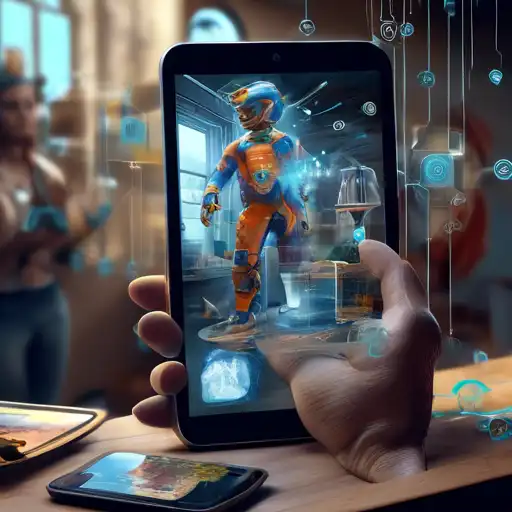Introduction to Augmented Reality
Augmented Reality (AR) is transforming the way we interact with the world around us by overlaying digital information onto the physical environment. This innovative technology has found applications in various sectors, including education, retail, and entertainment, offering immersive experiences that were once the stuff of science fiction.
How Augmented Reality Works
At its core, AR technology uses sensors and algorithms to detect the user's environment and superimpose computer-generated images, sounds, or other data onto the real world. This seamless integration is achieved through devices such as smartphones, tablets, and AR glasses, making digital interactions more intuitive and engaging.
The Impact of AR on Industries
Augmented Reality is revolutionizing industries by enhancing user experiences and operational efficiencies. Below are some key sectors benefiting from AR:
- Retail: AR enables customers to visualize products in their own space before making a purchase, significantly improving the shopping experience.
- Education: Interactive AR applications make learning more engaging by bringing abstract concepts to life.
- Healthcare: AR assists in complex surgeries by providing surgeons with real-time, 3D visualizations of the patient's anatomy.
- Entertainment: From gaming to live events, AR creates immersive experiences that captivate audiences.
Future Trends in Augmented Reality
The future of AR is bright, with advancements in technology paving the way for more sophisticated applications. Innovations such as AR cloud and wearable AR devices are expected to drive the next wave of digital transformation, making AR an integral part of our daily lives.
Challenges and Considerations
Despite its potential, AR technology faces challenges, including privacy concerns, technical limitations, and the need for widespread adoption. Addressing these issues is crucial for unlocking the full potential of augmented reality.
For more insights into the latest digital innovations, explore our tech trends section.
Conclusion
Augmented Reality represents a significant leap forward in how we blend the digital with the physical. As technology continues to evolve, AR will undoubtedly play a pivotal role in shaping future interactions, offering endless possibilities for innovation and engagement.
